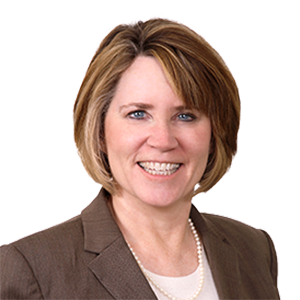As the United States government works to quickly combat the spread of the coronavirus, healthcare providers must consider the rapidly evolving guidance while maintaining compliance with current statutory and regulatory requirements. Norton Rose Fulbright lawyers are closely monitoring these government and health organization pronouncements and counseling clients on their operations and compliance with legal requirements.
National emergency declaration
On Friday, March 13, 2020, President Trump declared the COVID-19 pandemic a national emergency, three days after the World Health Organization (WHO) classified COVID-19 as a pandemic. President Trump also instructed state governments to activate their emergency preparedness contingency plans. Secretary of the US Department of Health and Human Services (HHS) Alex Azar had previously declared a public health emergency on January 31, 2020.
The emergency declaration relies on the National Emergency Act, which grants the President and executive branch sweeping power to act quickly in an emergency, including suspending or waiving provisions of federal law. President Trump also invoked the Stafford Act, which empowers the Federal Emergency Management Agency to direct the US response and assist state and local governments. The emergency declaration frees US$50 billion in federal resources to address the spread of COVID-19 and allows HHS Secretary Alex Azar to waive regulatory impediments to this response. Under Section 1135 of the Social Security Act, the Secretary may temporarily waive or modify certain Medicare, Medicaid, and CHIP requirements. For example, the Secretary may waive or modify conditions of participation or certification and preapproval requirements. In determining whether to invoke a 1135 waiver, the Assistant Secretary for Preparedness and Response considers requests from Governors' offices, feedback from healthcare providers, and requests to regional or field offices for assistance. The Centers for Medicare & Medicaid Services (CMS) may implement specific waivers or modifications on a "blanket" basis when "a determination has been made that all similarly situated providers in the emergency area need[s] such a waiver or modification." However, Section 1135 waiver authority applies only to federal requirements and does not apply to state requirements, for example, licensure requirements.
Flexibilities for providers
The emergency declaration provides the HHS Secretary with broad authority to grant waivers to give additional flexibility to providers. Specifically, under section 1135 of the Social Security Act, the Secretary may temporarily waive or modify certain Medicare, Medicaid and CHIP program requirements and conditions of participation. The following waivers are some of the waivers made available to healthcare providers:
- Skilled Nursing Facilities – CMS is waiving the 3-day hospital stay requirement for subsequent Medicare skilled nursing facility (SNF) coverage for "those people who need to be transferred as a result of the effect of a disaster or emergency." For certain beneficiaries who recently exhausted their SNF benefits, the waiver renews SNF coverage without requiring a new benefit period.
- Provider Locations – CMS is temporarily waiving requirements that out-of-state providers be licensed in the state where they are providing services.
- Provider Enrollment – To maximize the number of providers available, CMS is allowing licensed providers to render services outside of their state of enrollment, and postponing revalidation actions as well as expediting pending or new provider applications. This is limited to Medicare, Medicaid and CHIP reimbursement only, and state law will govern whether a non-federal provider is permitted to provide services in the state without specific state licensure. The waiver also establishes a hotline for non-certified Part B suppliers, physicians and practitioners to enroll and receive temporary Medicare billing privileges.
- Critical Access Hospitals – CMS is waiving the requirement that critical access hospitals limit the number of beds to 25 and the length of stay to 96 hours.
- Medicare Appeals – For Medicare appeals in fee for service, Medicare Advantage, and Medicare Part D, the waiver provides an extension to file an appeal and waives certain procedural requirements such as timeliness for requests for additional information.
- State Medicaid and CHIP – CMS encourages states to be familiar with the Disaster Preparedness Toolkit, which outlines numerous support strategies including flexibilities in current statute, Medicaid and CHIP state plan amendments, section 1915(c) waiver Appendix K, section 1115 demonstrations, and section 1135 waivers.
Guidance to providers
CMS has been issuing guidance to providers and state survey agencies following the declaration of a public health emergency.
- Nursing Homes – Nursing home facilities are instructed to prohibit access by all visitors and non-essential personnel. States are permitted to implement restrictions exceeding CMS requirements. Nursing facilities are also encouraged to actively screen and restrict staff who work at multiple facilities, and use multiple means of communication to inform individuals and non-essential personnel of the new requirements.
- Home Health Agencies (HHA) – When making home visits, HHA caregivers should monitor the status of everyone, including other residents and visitors in the homecare setting, for signs or symptoms of COVID-19. HHAs are normally expected to provide supplies for respiratory hygiene and cough etiquette; however, state and federal surveyors should not cite HHAs for failing to provide certain supplies if they are having difficulty obtaining them for reasons outside their control. CMS has provided a FAQ with guidance on screening, treatment, and transfer to higher level care when necessary.
- Dialysis Facilities – In addition to screening all patients, staff and visitors, dialysis facilities should have separate waiting spaces for patients with undiagnosed respiratory symptoms and staff caring for these patients should follow Standard, Contact, and Droplet Precautions.
- Hospice Agencies – Patients with symptoms exacerbated by COVID-19 who cannot be managed in the home setting should be transferred to a hospice inpatient unit. The decision to discontinue in-home isolation for home hospice patients with COVID-19 should be made on a case-by-case basis considering severity, illness signs and symptoms, and laboratory results.
- Use of Certain Industrial Respirators by Health Care Personnel – CDC's updated Personal Protective Equipment (PPE) recommendations will be considered by CMS surveyors in determining compliance with infection control protocols. The FDA approved the CDC's request for an emergency use authorization for healthcare personnel to use certain industrial respirators in healthcare settings. Respirators approved by the National Institute of Occupation Safety and Health (NIOSH) may be used by healthcare personnel during the COVID-19 outbreak.
- Telehealth – The "Telehealth Services During Certain Emergency Periods Act of 2020" included in the spending package waives certain Medicare restrictions on payment for telehealth services during times of emergency, and expands Medicare beneficiaries' ability to use telemedicine.
- Medicare Advantage and Part D Sponsors – CMS published a memorandum specific to Medicare Advantage organizations, Part D sponsors, and Medicare-Medicaid plans detailing the possible obligations and permissible flexibilities related to disasters and emergencies resulting from COVID-19.
- Suspension of Survey Activities – CMS is suspending non-emergency inspections nationwide to enable inspectors to focus on addressing the spread of COVID-19. CMS details the priority of survey activity in its memorandum to state survey agency directors.
- HIPAA – Disclosures of PHI to public health authorities are permitted without patient authorization. This guidance applies to federal, state and local agencies responsible for public health matters, as well as persons and entities acting under an agency's direction. Disclosures to anyone in a position to prevent serious or imminent threats are allowed within the professional judgment of healthcare professionals.
- EMTALA – Every hospital or critical access hospital with a dedicated emergency department (ED) is required to conduct medical screening of all individuals entering the ED. Every ED is expected to have capabilities to screen for COVID-19 and immediately identify and isolate those individuals who are potentially infected. Hospitals and CAHs are expected to consider current CDC guidance in determining whether they are able to provide required isolation and/or to accept appropriate transfers. To date, Secretary Azar has not yet provided for a waiver of EMTALA requirements under his Section 1135 authority.
- Healthcare Common Procedure Coding System (HCPCS) – There are two new HCPCS codes for providers who test patients for COVID-19. In addition to the first released HCPCS code U0001 to bill for CDC testing laboratories, CMS announced a second HCPCS code (U0002) for billing non-CDC COVID-19 diagnostic tests. Medicare will accept claims with codes U0001 and U0002 beginning April 1, 2020 for dates of service on or after February 4, 2020.
- Essential Health Benefit Coverage – Essential Health Benefits generally include coverage for diagnosis and treatment of COVID-19, although the exact coverage details and cost-sharing amounts may vary by plan.
As CMS issues additional guidance, it may be found on the Current Emergencies website.
The Families First Coronavirus Response Act
The US House of Representatives, with bipartisan support, passed the Families First Coronavirus Response Act early Saturday morning, March 14, 2020. The Senate is expected to promptly pass the legislation during the week of March 16, 2020.
With an emphasis on testing, the bill requires private health plans to cover COVID-19 diagnostic testing, including the cost of provider, urgent care center, and emergency department visits. Medicare Part B, Medicare Advantage, TRICARE, Medicaid and CHIP must also cover expenses for provider visits when a COVID-19 test is administered or ordered.
The bill provides job-protected leave for government employees and employees of employers with fewer than 500 employees. Leave may be used for quarantine due to exposure or symptoms of COVID-19, to care for a quarantined family member, and to care for a child if the child's school or care is made unavailable due to COVID-19. The legislation also includes a refundable tax credit equal to 100 percent of paid sick and family leave wages paid by an employer. The tax credit applies to amounts paid to sick or quarantined employees, and a lesser credit applies to amounts paid to employees caring for family.
The bill increases the Medicaid Federal Medical Assistance Percentages (FMAP), the rate determining the amount of federal funds given to a state for Medicaid expenditures, by 6.2 percent. The bill also provides US$1 billion for emergency grants to states for processing and paying unemployment insurance benefits, and increased food aid to low income families and food assistance programs.
Additional sources of guidance
Many physician associations are regularly updating guidance for clinicians. For instance, the American Medical Association and the American Academy of Family Physicians have published guidance resources for physicians addressing COVID-19. Various state organizations, such as the California Medical Association and the Pennsylvania Medical Society have designated resource centers on their website, providing guidance to both physicians and patients. In addition, the American College of Emergency Physicians and the Infectious Diseases Society of America are continually updating their COVID-19 resource centers with guidance in topic areas including clinical assessment and personnel.
The Joint Commission is available to help accredited organizations develop appropriate COVID-19 responses, and will continue providing regular updates. The Joint Commission will continue conducting surveys in most places until it is no longer safe for employees.
The Health Law Pulse and our dedicated COVID-19 (coronavirus) site
Norton Rose Fulbright attorneys are continuing to monitor government and other guidance for providers regarding this public health crisis. Please check our blog, The Health Law Pulse for regular updates. For updates regarding other industries, see our dedicated Coronavirus page on nortonrosefulbright.com.




